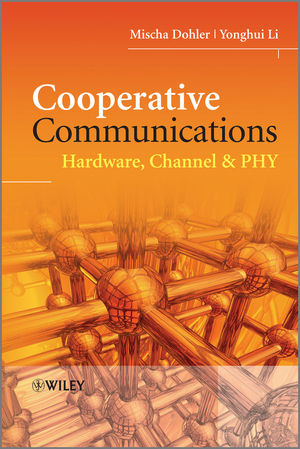Cooperative Communications: Hardware, Channel and PHYISBN: 978-0-470-99768-0
Hardcover
464 pages
March 2010
 |
||||||
Cooperative Communications: Hardware, Channel & PHY focuses on issues pertaining to the PHY layer of wireless communication networks, offering a rigorous taxonomy of this dispersed field, along with a range of application scenarios for cooperative and distributed schemes, demonstrating how these techniques can be employed. The authors discuss hardware, complexity and power consumption issues, which are vital for understanding what can be realized at the PHY layer, showing how wireless channel models differ from more traditional models, and highlighting the reliance of PHY algorithm performance on the underlying channel models. Numerous transparent and regenerative relaying protocols are described in detail for a variety of transparent and regenerative cooperative schemes.
Key Features:
- Introduces background, concepts, applications, milestones and thorough taxonomy
- Identifies the potential in this emerging technology applied to e.g. LTE/WiMAX, WSN
- Discusses latest wireless channel models for transparent and regenerative protocols
- Addresses the fundamentals as well as latest emerging PHY protocols
- Introduces transparent distributed STBC, STTC, multiplexing and beamforming protocols
- Quantifies regenerative distributed space-time, channel and network coding protocols
- Explores system optimization, such as distributed power allocation and relay selection
- Introduces and compares analog and digital hardware architectures
- Quantifies complexity, memory and power consumption of 3G UMTS & 4G LTE/WiMAX relay
- Highlights future research challenges within the cooperative communications field
This book is an invaluable guide for professionals and researchers in communications fields. It will also be of interest to graduates of communications and electronic engineering courses. It forms part of an entire series dedicated to cooperative wireless systems.



